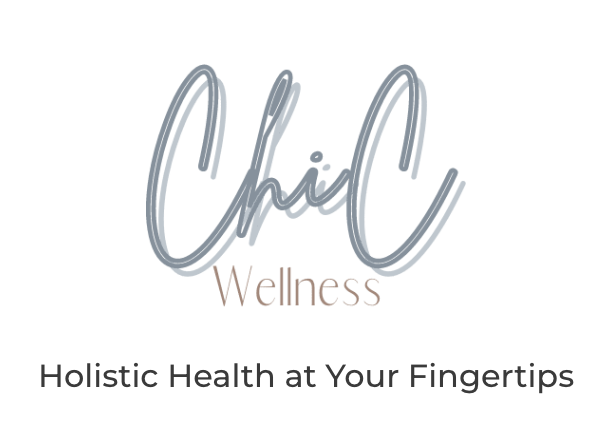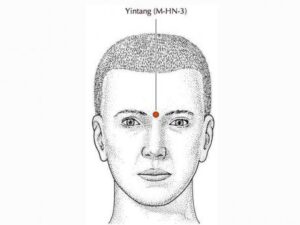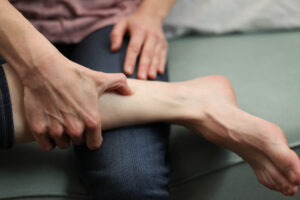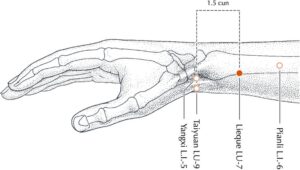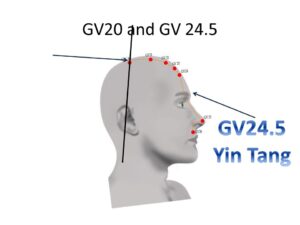While modern medicine provides treatments for mental health problems, an ancient practice like acupuncture has proven highly effective in fostering emotional well-being.
So, what do the top 10 acupuncture points for mental health look like? This insightful blog will explore these points in-depth, discussing their role in promoting a positive mental state. We’ll also explore how they can help with stress, anxiety, and depression.
Acupuncture is a medical practice that originated from traditional Chinese medicine. It involves using fine needles inserted into specific points on the body – called acupuncture points. According to the theory, these points connect with energy pathways or meridians that flow throughout the body. The goal of acupuncture is to stimulate these points and restore the balance of energy, which can promote healing.
Acupuncture has been thoroughly researched for its ability to treat physical ailments, but recent studies have focused on its potential benefits for mental health. There is promising evidence to suggest that acupuncture can effectively relieve symptoms of anxiety, depression, and stress-related disorders.
As you begin your journey towards enlightenment through acupuncture, it’s crucial to remember that this therapy complements conventional treatments and should be used under the guidance of a qualified healthcare professional. By incorporating acupuncture into your mental health routine, you can benefit from the holistic healing power and unlock your body’s natural ability to support your emotional well-being.
Yintang (Third Eye) Point
To find the Yintang point, place your finger between your eyebrows at the center of your forehead. This is where the Third Eye point is located, nestled between the brows. Stimulating this acupuncture point is a highly effective method for getting in touch with your inner self, and it is also one of the most accessible points to reach.
Function:
The Yintang point is well-known for its ability to enhance mental clarity, relaxation, and emotional well-being. When this point is stimulated, it can activate your body’s natural healing abilities and provide a sense of inner peace. The following are some of the primary functions associated with the Yintang point and how it can relieve stress and anxiety and promote relaxation.
Alleviating Anxiety and Stress: The Yintang point is helpful for combatting anxiety and stress. It can calm the mind, reduce restlessness, and relieve tension when activated. By stimulating this point, you can feel a sense of peace and tranquility, providing a break from the stress of everyday life.
Enhancing Mental Clarity: If you’re having trouble concentrating or experiencing mental fog, activating the Yintang point can help. This point can improve your focus, clear your mind, and enhance your mental clarity. It’s beneficial for those feeling mentally tired or overwhelmed by excessive thoughts.
Promoting Quality Sleep: If you struggle with sleep problems like insomnia, you might find relief by targeting the Yintang point. Stimulating this point before bed can calm your mind and body, leading to a more restful and restorative sleep. You may notice an improvement in the quality of your sleep and wake up feeling rejuvenated.
Several studies suggest benefits associated with yin-tang acupuncture.
For example, in a 2017 study Trusted Source of patients about to undergo neurosurgery, acupuncture at the yin tang reduced their anxiety. And a 2018 review Trusted Source also suggested that yin tang acupuncture or acupressure helped reduce anxiety in people about to undergo other forms of surgery.
Pericardium 6 (Inner Gate) Point
Extend your arm with your palm facing upwards to locate the Pericardium 6 (P6) point. This point can be found about three finger widths above the crease of your wrist, right between the two tendons on the inner side of your forearm. You’ll know you’ve found it when you feel the exact center of your wrist.
Function:
The Pericardium 6 point, also called the Inner Gate, is well-known for its capability to regulate and balance emotions, which is beneficial for improving mental health. When you stimulate this point, you can experience several benefits that can help enhance your emotional well-being.
Some of the essential functions associated with the P6 point include and how it can alleviate nausea, depression, anxiety and support the heart.
Reducing Anxiety and Nervousness: Stimulating the P6 point can have a calming effect on both your mind and body. This can help reduce anxiety, nervousness, and stress and promote relaxation and tranquility. Efficiently managing the demands of everyday life with more comfort becomes possible when one reduces their stress levels.
Relieving Depression: If you’re experiencing symptoms of depression, stimulating the P6 point through acupuncture could help. This specific point can regulate your energy flow, improving your emotional balance and easing depressive symptoms. Activating the P6 point may result in a better mood, increased emotional stability, and overall well-being.
Alleviating Nausea and Motion Sickness: The P6 point is well-known for its ability to reduce nausea and can be helpful for those experiencing it due to anxiety, stress, or motion sickness. It’s often used in acupuncture to alleviate symptoms of morning sickness in pregnant women and may also positively affect mental health.
The traditional Chinese method of acupuncture or acupressure at the P6 (Nei Guan) point is an effective treatment for nausea and vomiting.
Kidney 3 (Great Ravine) Point
To locate the Kidney 3 (K3) acupressure point, sit with your foot on the ground and flat. Look for the depression between the inner ankle bone and the Achilles tendon. It is located behind the ankle bone, just slightly below the level of the ankle bone. Accessing the Kidney 3 point is simple and can offer great therapeutic benefits.
Function:
The Kidney 3 (Great Ravine) point is known for its ability to nourish and harmonize the energy of the kidneys, which play a vital role in our overall well-being. Stimulating this point can bring balance and vitality to the body and mind.
Here are some critical functions associated with the K3 point and how it can help strengthen resilience and cope with stress.
Enhancing Vitality and Energy: Stimulating the Kidney 3 point increases the body’s vital energy, or qi. This can improve energy levels, reduce fatigue, and better stress handling. The point is considered a source of vitality, promoting overall well-being and vigor.
Calming Anxiety and Fear: Did you know stimulating the Kidney 3 point can calm the mind and emotions? It’s true! This point can help alleviate anxiety, fear, and excessive worrying, making you feel more centered and composed. By practicing this technique, you can cultivate a sense of inner calmness that will empower you to face challenges with greater clarity and ease.
Strengthening Emotional Resilience: The Kidney 3 acupuncture point is linked to emotional resilience and stability. Stimulating this point can improve your capacity to handle emotional stress, achieve emotional balance, and cultivate a solid inner sense of strength. It is beneficial during emotional turmoil or when dealing with traumatic events.
Apply the Water Element Aroma Acu-Stick® to Acupressure Point Kidney 3 to activate the healing potential of the pressure point.
Liver 3 (Great Surge) point
To locate the Liver 3 (LV3) point, visualize a line connecting the big toe and second toe. Approximately one thumb-width away from where the two toes meet, there will be a slight dip or depression, where the LV3 point can usually be found. This point can be stimulated through acupressure or acupuncture and is easily accessible.
Function:
Acupuncturists consider the Liver 3 (Great Surge) point as a crucial point for regulating the flow of Qi (life force energy) and promoting balance within the body. The LV3 point has several special functions, including the following.
Harmonizing Liver Qi: The Liver meridian ensures that Qi flows smoothly throughout the body. When Qi becomes stagnant or imbalanced, it can result in various physical and emotional symptoms. To address this, stimulating the LV3 point can help regulate the Liver Qi, promote its smooth flow, and alleviate symptoms such as irritability, mood swings, and PMS.
Relieving Stress and Promoting Calmness: The LV3 point is well-known for its ability to ease stress, tension, and frustration. When you stimulate this point, it can help release emotional blockages, lessen anxiety, and encourage a feeling of calmness and emotional balance. This can be especially helpful for people who experience stress-related symptoms or tend to become angry or irritable.
Soothing Headaches and Eye Strain: One effective way to relieve headaches, particularly those caused by liver Qi stagnation, is by using the Liver 3 point. Stimulating this specific point can help ease tension headaches, migraines, and eye strain that result from a prolonged computer or screen use. It can also induce relaxation in the head and eye regions, providing relief and clarity.
Supporting Liver Health: According to traditional Chinese medicine, the Liver plays a crucial role in detoxification and maintaining good health. Activation of the LV3 point can aid liver function, facilitate the removal of toxins, and boost the body’s inherent detoxification mechanisms.
Spleen 6 (Three Yin Intersection) Point
To locate the Spleen 6 (SP6) point, sit down and put your hand on your inner ankle. The point is located four finger-widths above the inner ankle bone, on your lower leg, just behind the shinbone. It’s in the hollow space between the shinbone and the calf muscle.
Function:
The Three Yin Intersection or Spleen 6 point is highly regarded for enhancing mental health and promoting a sense of overall well-being. It balances the energies of the Spleen, Liver, and Kidney meridians, which are crucial in maintaining emotional balance.
Below are some essential functions linked to the SP6 point and how it can reduce anxiety and associated physical symptoms
Regulating Emotional Imbalances: Stimulating the Spleen 6 point can help balance emotions and relieve symptoms like irritability, mood swings, and emotional instability. This point is effective in promoting emotional harmony and inner calmness.
Relieving Stress and Anxiety: The state of your mental health can be significantly affected by stress and anxiety. A specific point on your body, known as the SP6 point, is believed to have the ability to ease the mind, lessen stress, and lower anxiety levels. By activating this point, it is possible to experience a profound sense of relaxation and achieve a more peaceful state of mind.
Harmonizing Hormonal Imbalances: Mood disturbances such as irritability, sadness, and feelings of imbalance can be caused by hormonal imbalances. To regulate hormonal fluctuations, especially in women, the Spleen 6 point is believed to promote emotional stability and balance.
Alleviating Menstrual Symptoms: If you’re a woman with menstrual discomfort, the Spleen 6 point can help provide relief. It’s often used to ease menstrual cramps, regulate menstrual flow, and lessen symptoms like irritability and emotional sensitivity.
Heart 7 (Spirit Gate) Point
To locate the Heart 7 (H7) point, hold out your hand with your palm facing upwards. Look for a depression just below the crease of your wrist, in line with your little finger. The point is between the tendons and at approximately the same level as the ulnar artery. It is readily accessible and has significant therapeutic benefits.
Function:
The Heart 7 (Spirit Gate) point is renowned for calming the mind, nourishing the spirit, and promoting emotional well-being. Stimulating this point can profoundly impact mental health and emotional balance.
Here are some critical functions associated with the H7 point and how it can regulate heart rhythm, improve sleep, and soothe anxiety.
Alleviating Anxiety and Restlessness: The Heart 7 point has a calming effect on your mind and can help reduce anxiety and restlessness. You can experience inner peace and tranquility by activating this point, allowing your mind to respite from everyday stresses.
Easing Insomnia and Improving Sleep Quality: If you struggle with insomnia or have difficulty falling asleep, the Heart 7 point can offer support. Stimulating this point can help regulate sleep patterns, induce relaxation, and promote deep, restful sleep. It is particularly effective in cases where insomnia is linked to emotional or mental restlessness.
Enhancing Emotional Balance: Emotional imbalances, such as excessive worry, sadness, or irritability, can be addressed by activating the Heart 7 point. This acupuncture point helps to stabilize emotions, foster inner harmony, and cultivate a sense of well-being. By accessing this point, you can experience a greater capacity to cope with emotional challenges.
Promoting Clarity of Thought and Mental Focus: The Heart 7 point enhances mental clarity, concentration, and focus. It can help clear the mind of mental fog, promote cognitive function, and improve overall mental acuity. By stimulating this point, you can experience enhanced mental performance and greater mental clarity.
Lung 7 (Broken Sequence) Point
Extend your arm and turn your palm upwards to find the Lung 7 (LU7) point. You can locate the point on the thumb side of your wrist, in the depression, just before the crease of your wrist. It can be found between the two prominent tendons, approximately one thumb-width above the wrist crease. This point is easily accessible and has significant therapeutic benefits.
Function:
The Lung 7 (Broken Sequence) point is well-known for improving respiratory health and boosting energy flow throughout your body. Activating this point can significantly benefit your lungs, immune system, and overall health. Here are some essential functions linked to the LU7 point:
Strengthening the Respiratory System: The Lung 7 point is a critical pressure point for respiratory health, as it can strengthen the lungs, improve lung function, and enhance the body’s ability to absorb oxygen. Stimulating this point can help support the health and vitality of your respiratory system.
Relieving Respiratory Disorders: The Lung 7 point is commonly used to address various respiratory disorders such as asthma, bronchitis, coughs, and congestion. It helps to clear the airways, reduce inflammation, and alleviate respiratory symptoms. Regular stimulation of this point can provide relief and promote healthier breathing.
Boosting the Immune System: Did you know that stimulating the Lung 7 point can help boost your immune system? Doing so can improve your body’s ability to fight off respiratory infections and allergies. This point is crucial for maintaining overall immune health, so it’s worth incorporating into your routine.
Calming the Mind and Alleviating Stress: Stimulating the Lung 7 point has been known to have a calming effect on the mind and emotions. It can aid in reducing stress and anxiety while promoting a greater sense of internal calmness. This technique allows individuals to experience emotional balance, improved mental clarity, and overall well-being.
Governing Vessel 24.5 (Yin Tang) Point
Locating the Yin Tang point is a breeze – position your finger at the center of your forehead, right between your eyebrows. The small indentation, known as the third eye, is where you’ll find this point. By accessing it, you can reap numerous therapeutic benefits with ease.
Function:
The Yin Tang point or Governing Vessel 24.5 is crucial in promoting emotional and spiritual well-being by calming the mind and reducing stress. Connecting the upper and lower regions helps harmonize the body’s energies. Some of the critical functions of the Yin Tang point include:
Calming the Mind and Spirit: The Yin Tang point is a well-known pressure point that can help to calm the mind and spirit. When stimulated, it can bring about a sense of inner peace, mental clarity, and tranquility. Many people use it to alleviate anxiety and restlessness and promote relaxation.
Relieving Headaches and Eye Strain: If you’re experiencing headaches caused by stress or tension, the Yin Tang point can help alleviate them. This pressure point can also relieve strain and tired, dry eyes. You can find relief from these discomforts by gently massaging or pressing on the point.
Enhancing Intuition and Spiritual Connection: The Yin Tang point is believed to be the center of intuition and spiritual insight, also known as the third eye. Stimulating this point can help enhance your intuition, deepen your spiritual connection, and increase your awareness. Many use this point during meditation to promote inner stillness and heightened consciousness.
Balancing the Energy Flow: According to traditional beliefs, activating the Yin-Tang point can help harmonize the energy flow in your body, leading to a more balanced state of yin and yang energies. This is thought to promote overall wellness and vitality. You can optimize your body’s energy flow and restore balance by targeting this point.
Gallbladder 20 (Gates of Consciousness) Point
To locate the GB20 point, start by placing your fingers at the base of your skull where the neck muscles meet the skull. Then, move your fingers about two to three inches outward until you feel a slight dip or depression. You will find GB20 in this hollow space just below the occipital bone, at the same level as the top of your ears. This point is easy to locate and can be stimulated directly.
Function:
The Gallbladder 20 point, also known as the Gates of Consciousness, has therapeutic benefits that promote mental clarity, relieve tension, and improve overall well-being. Some essential functions of this point include: GB20 point:
Clearing the Mind: If you want to improve your mental clarity and cognitive function, stimulating the GB20 point can be beneficial. This point alleviates mental fogginess, enhances concentration and memory, and is especially helpful for those studying for exams or experiencing mental fatigue.
Relieving Headaches and Eye Strain: GB20 is a pressure point that relieves headaches, especially those caused by stress or tension. It can help ease migraines, sinus headaches, and eye strain from using screens for too long. By gently stimulating this point, you can experience a much-needed sense of relief and relaxation.
Reducing Neck and Shoulder Tension: This acupuncture point is highly effective in releasing tension and promoting relaxation in the neck and shoulder area. By stimulating GB20, you can help alleviate muscle tightness, reduce stiffness, and ease discomfort associated with conditions like neck pain or whiplash injuries.
Promoting Emotional Balance: GB20 is known for promoting emotional well-being and balance. By stimulating this point, you can help regulate emotions, reduce stress, and promote a sense of calmness. It is often used to alleviate anxiety, irritability, and emotional imbalances.
Large Intestine 4 (Joining Valley) Point
To find the LI4 point, examine the back of your hand and locate the webbing between your thumb and index finger. The LI4 point is located approximately in the middle of the muscle mass at the highest point when the thumb and index finger are brought close together. Once found, stimulation can be targeted for easy access.
Function:
The acupuncture point known as Large Intestine 4, or Joining Valley, is highly valued for its numerous therapeutic benefits. It is considered a crucial point in acupuncture due to its many functions. Here are some of the critical functions associated with this point:
Pain Relief: The point LI4 is known for its pain-relieving properties and is especially helpful in treating headaches, migraines, and pain in the face, neck, and upper body. Stimulating this point can help alleviate pain, decrease inflammation, and encourage the body’s natural pain relief mechanisms.
Boosting the Immune System: One way to promote overall health and wellness is activating LI4, which enhances the body’s immune response. Doing so can strengthen your immune system, increase resistance to illness, and support the body’s natural healing mechanisms.
Regulating Energy Flow: LI4 is associated with the Large Intestine meridian, which plays a vital role in the body’s energy circulation. Stimulating this point can help regulate the flow of qi (life force energy) throughout the body, promoting balance and harmony. It is often used to alleviate symptoms of stagnation, such as constipation or digestive disorders.
Stress Reduction and Relaxation: LI4 is known for promoting relaxation, reducing stress, and restoring emotional balance. By stimulating this point, you can help calm the mind, relieve tension, and promote inner peace and well-being.
-
Conclusion
Acupuncture is a valuable part of a holistic approach to mental health.
The top 10 acupuncture points discussed in this blog post have been used in my clinical practice and help to support mental health by relieving physical symptoms and balancing emotions.
If you are struggling with mental health issues, seeking help from a qualified healthcare professional is essential. Acupuncture can be used as part of a comprehensive treatment plan. Acupunture is a safe and effective therapy that can be used to support mental health. The points discussed in this blog post can help to relieve stress, anxiety, and depression and promote relaxation. If you want to try acupuncture, finding a qualified practitioner who can create a personalized treatment plan for your specific visit out contact us page.
With the proper care, acupuncture can be a valuable tool in your journey to mental wellness. To stimulate a specific point, a standard method is to insert thin acupuncture needles. The needle is placed flat against the skin and directed downwards, with a depth of no more than half an inch.
Text source

